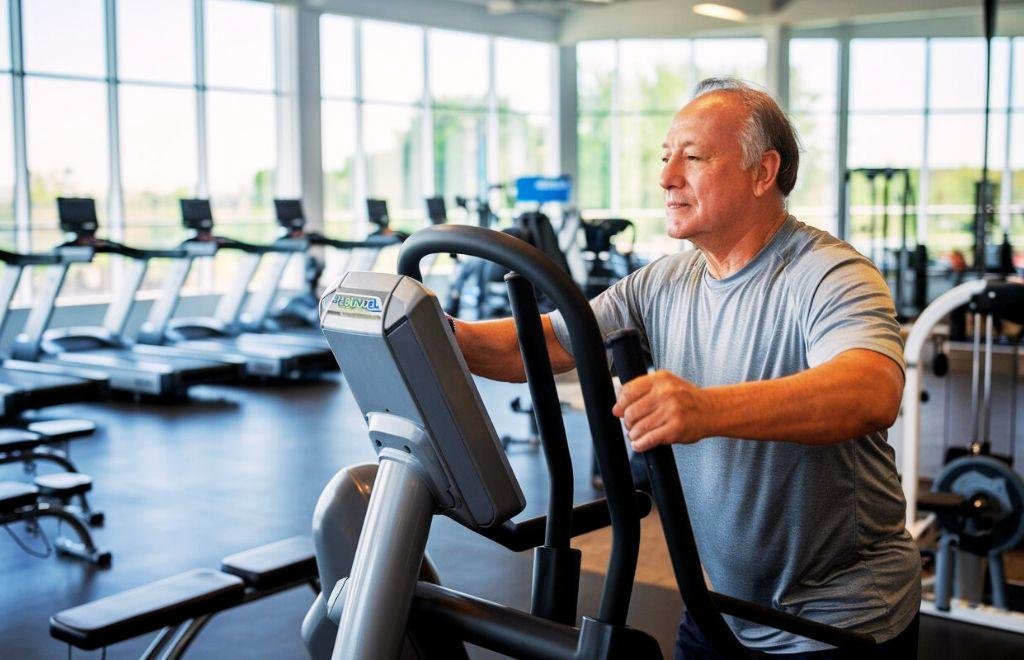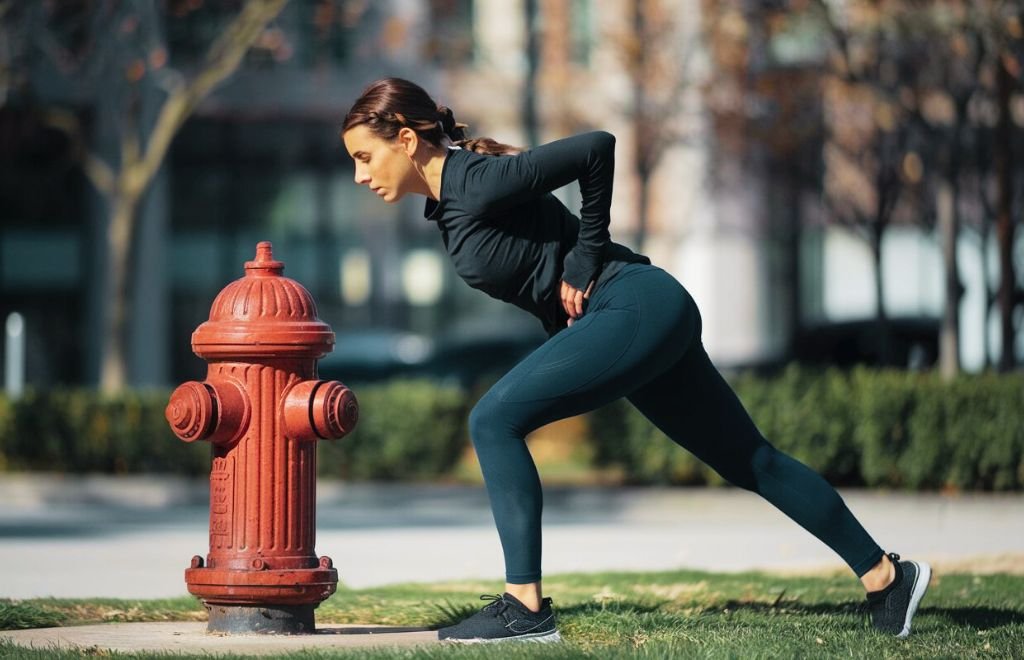One strength-training exercise you could find helpful for toning, sculpting, and strengthening your body are lunges. They can also raise general athletic performance and degree of fitness.
Popular for their ability to increase mobility and stability, lunges are a resistance exercise best for strengthening your back, hips, and legs. For current athletes—including bikers and runners—as well as for those hoping to get stronger, lunges are perfect.
Lunges exercise Benefits of Doing Regularly Keep reading to explore the advantages of lunges together with the muscles they target and several variations.
Adventures of lunging 1. Weight loss
Lunges target the major muscle groups in your lower body, so strengthening leans muscles and lowers body fat. Your resting metabolism will rise as a result, which will help you to burn extra calories and cut extra weight. Lunges exercise Benefits.

Including lunges in a high-intensity circuit workout program utilizing heavy weights may help you push yourself to your outer limits if you’re trying to lose weight.
2. stability and balance
Since you work on either side of your body separately, lunges are a lower body unilateral exercise. Lunges exercise Benefits The single-leg motions build balance, coordination, and stability by using your stabilizing muscles.
Working one leg at a time causes your body to be less stable, which encourages your spine and core to work more to keep balanced Lunges exercise Benefits.
3. Symmetry and alignment
Lunges help your body to become more symmetrical by correcting imbalances and misalignments, Lunges exercise Benefits so they are better than bilateral exercises for rehabilitation.
Spend some extra time training on one side if you have one that is less strong or flexible so you avoid overusing or compensating the dominant side.
4. Lift your height.
Without taxing your spine too much, lunges help develop your back and core muscles. A strong, steady core helps you to improve your posture and lowers your risk of injury by making everyday motions easier. Lunges exercise Benefits.
Variations in lunge type: advantages
5. Stationary lunges exercise Benefits

Stationary lunges work your hamstrings, glues, and quadriceps. Your front leg will carry most of your weight; you will balance, steady, and support your whole body with your rear leg.
Since stationary lunges constitute the basis for all the variations in the lunge, you will want to have the form perfect Lunges exercise Benefits.
6. Side lunges number
Lunges exercise Benefits Lateral lunges increase strength, balance, and stability. They may also assist to minimize the look of cellulite by working your inner and outer thighs.
Lunges exercise Benefits Training your body to go side to side, side lunges provide a good variation from the usual forward or twisting motions. Side lunges also target your hips, quadriceps, and legs at a somewhat different angle, thereby exercising them somewhat differently.
As you perform these lunges, focus on the outsides of your legs and work on activating these muscles Lunges exercise Benefits.
7. Lunges walking forward
Walking lunges call both coordination and balance. Targeting your core, hips, and glues, the walking variation increases general stability. They also aid to improve your functioning everyday motions and boost your range of motion.
Add weights or a torso twist to challenge walking Lunges exercise Benefits.
8. Lunges reverse
Reverse lunges works your hamstrings, glues, and core. They give your front leg some extra stability and relieve some of your joint pressure. Those with knee issues, trouble balancing, or less hip mobility will find this perfect.
Reverse lunges change the direction from most of your movements and train your muscles to operate differently, Lunges exercise Benefits thereby helping you to be more balanced as you travel backward.
9. Lunges in twist form

To more deeply activate your core and glutes, twist stationary, walking, or reverse lunges. Maintaining the alignment of your knees, twisting lunges also demand balance and stability as you rotate your torso away from your lower body.
Lunges exercise Benefits Additionally you will engage the muscles in your feet and ankles.
10. Lunge in a curtsy
Excellent for your posture, curtsy lunges help to tone and build your derrière. Strong glues also aid to minimize the chance of injury by preventing and relieving back and knee pain, so enhancing your sports performance.
Lunges exercise Benefits As well as help with hip stabilization, curtsy lunges sculpt and strengthen your hamstrings, quadriceps, and hip adductors. Up the intensity of this variant with a kettlebell or dumbbell.
11. Lunges and squats

Both lunges and squats strengthen your lower body and provide great value to your exercise program. Lunges are less prone to strain your back, hence you could prefer them if you have low back discomfort. If you feel more steady in a squat, think about concentrating on this position.
It’s a matter of personal taste to see if one of these two workouts feels better for your body or yields the best results since they will work your body in like manner. Of sure, including lunges and squats in your program is good.
7 Scientifically Supported Uses for Lunges
Request a lower-body exercise from any personal trainer, and most likely they would suggest lunges. Lunges exercise Benefits For trainers, athletes, and gym clients all around, the lunge has evolved into a go-to motion.
The exercise’s adaptability and low entry barrier appeal to many. Stated differently, you can lunge if you can walk and run painlessly. Moreover, lunges provide several advantages to individuals who perform them regularly since they engage several muscle groups.
What advantages exist from lunges?
Consider a lunge as a hammer: a fundamental, powerful instrument for your toolkit in strength-training. Lunges exercise multiple key muscle groups using your body weight. And they can be rather advantageous.
- Lunges increase lower-body muscles’ strength.
One compound workout is lunges. Unlike isolated motions like calf lifts or bicep curls, which concentrate on one area at a time, this means they train many muscle groups and joints Lunges exercise Benefits.
Both compound and isolation workouts ought to be part of a full fitness program. Still, complex workouts offer the biggest bang for your money.
They assist you burn calories and activate more muscles, hence optimizing your workouts. One small study also revealed that compound exercises boost aerobic fitness and muscular strength more than isolation workouts.
Targeting and strengthening some of the biggest lower-body muscles, lunges aim and strengthen Lunges exercise Benefits:
buttocks or glues or butt muscles
Front of the thigh, quadriceps; rear of the thigh, hamstrings
Calves in
2. Lunges help to strengthen your balance.
Though a lunge mostly works the lower body, exercise also uses core and stabilizer muscles. These cover the abdominals and hip flexors. As you lunge, you have to use your core to remain firm on your feet.
Lower-limb function and balance have been demonstrated to be improved by a strong, steady core, which could help to reduce falls and other injuries. Given the core is the center of all movement, that is not shocking Lunges exercise Benefits.
3. Lunges boost your range of motion.
Over time, prolonged sitting can shorten and tighten your hip flexor muscles. Fortunately, lunges help to release this muscular tension and weakness. The range of motion a lunge involves yields this advantage.
Whether you lunge forward, backward, to the side, you stretch your hip flexors—including the psoas muscle. Among the best approaches to boost your flexibility is stretching. Lunging exercises so help to boost hip flexibility and mobility.
Lunges exercise Benefits can improve your athletic performance and functional fitness.
Lunges exercise Benefits do fall under several exercise forms, if it sounds like they belong in many others. By copying motions like kneeling, walking, and running, the action is also a functional fitness workout that helps enhance daily ability.
Lunges added to your exercise regimen might increase your functional strength, so enabling more effective daily movement. And enhanced functional strength and mobility can also help you perform better in sports.
5. Lunges help to balance muscles.
Exactly what it sounds like—a lack of harmony between muscle groups—is a muscular imbalance. This occurs when one group of muscles is stronger, weaker, looser, or tighter than another group pulling in the opposite direction. For instance, overtraining the biceps on the front of your arm could weaken the triceps on the back of your arm.
Muscle imbalances can arise from inactivity as well as from overuse. These unbalances can cause reduced mobility, pain, and injury.
Lunges exercise Benefits are fortunately able to assist balance some of these muscles. Working one leg at a time, they are a kind of unilateral exercise that lets you guarantee you train both sides equally.
This helps to avoid imbalances in your hamstrings, glues, quads, and hips. This clarifies why lunges could be able to prevent or heal ACL damage and other musculoskeletal disorders. Just be sure you perform the same amount of repetitions and sets on each leg.
6. Lunges could increase your metabolism.
The process by which the body turns food into the energy required for operation is known as metabolism. Your metabolism’s speed or slowness is determined in part by age and genes. Your metabolism cannot be greatly accelerated over night.
Still, you might choose a better lifestyle to somewhat increase your metabolism. Lunges, for instance, help to create lean muscular mass, which can raise your metabolism. That is so even at rest since muscle burns more calories than fat.
Recall that growing and preserving muscle depend critically on regular lunges and other resistance workouts. Eventually, you will have to start utilizing weights during lunges if you wish to achieve notable strength-training gains.
7. Lunges are easy and readily available.
Lunges exercise Benefits Starting strength training, lunges are a convenient approach for people of all fitness levels. Perfect this equipment-free exercise and gradually proceed to increasingly difficult forms. And you may start at home, in the gym, or even at work.
A great and popular lower body exercise are Lunges exercise Benefits . This flexible exercise program improves your general health and fitness in many different ways and develops a variety of muscle groups.
Regardless of your degree of fitness knowledge or where you are in your fitness path, the following 11 convincing reasons will persuade you to include lunges into your daily exercise program. strengthened leg muscles. Mostly when you lunge, your glues, hamstrings, and quadriceps are exercised.
Lunges exercise Benefits Regular exercise helps these lower body muscular groups to grow stronger and more steady. Improved Coordination and Balance. Lunges tax your balance and coordination as you only train one leg at a time.
Reduced risk of falling and more functional fitness follow from this. turning on the center. During lunges, the core must be steadied if one is to keep correct form. Your abdominal muscles will thus tighten, supporting and strengthening your core.
more hip flexibility. Stretch your hip flexors as you lunge forward to boost hip joint flexibility and range of motion. Lunge activation in action. Lunges are quite effective in targeting the glues. Regular lunges help build your posterior chain by strengthening your glute muscles.
Calorie Burning A difficult exercise with simultaneous engagement of several muscular groups are lunges. They boost your calorie burn, hence they are a great complement to any fat-loss diet. Improved alignment. Lunges improve your core and back muscles, so enhancing posture.
Good posture not only improves your appearance but also helps to lower your back problem risk. Functional agility. Lunges exercise Benefits replicate regular motions such walking, climbing stairs, and getting out of a chair. We call this functional fitness.
Lunges exercise Benefits Regular lunging will assist your body carry out these chores more effectively. Cardiovascular advantages. Apart from strength building, HIIT, or circuit training including lunges, will increase your heart rate and offer cardiovascular advantages.
Reduced Injury Risk Lunges repair muscular imbalances and strengthen the muscles that stabilize your knees and hips, therefore lowering your risk of frequent lower body diseases. Lunges can be performed forward, backward, lateral, and walking lunges, allowing you vary your program and focus on different muscle groups.
Advice for perfect lunge form
Correct Approach. Maintaining ideal form requires keeping your upper body straight, shoulders back, and core firm throughout through the exercise. As walk either forward or backward, keep your front knee from touching your toes. Lower your hips until both knees angle ninety degrees.
fluctuation. Try several lunge forms to make your exercise interesting and push your muscles from several angles.
Warm-up. Give an athletic warm-up first priority if you want your muscles and joints ready for lunges.
slow development. Perform bodyweight lunges first. As your strength grows, progressively raise the weight or resistance Lunges exercise Benefits.
Harmonize Work. Lunges next to a strong surface or, if you have problems with it, with a chair as support help you to increase your balance Lunges exercise Benefits.
Lunges increase your strength and stability as well as your cardiovascular fitness—all of which are advantages for your body and general health. Lunges have amazing effects on muscular tone, functional fitness, and injury prevention when part of a regular training program.
Any exercise depends on good technique and a reasonable, consistent speed. Leverage lunges’ ability to propel your path toward health and strength forward Lunges exercise Benefits.
Muscles operated.
Especially in your core, butt, and legs, lunges boost muscle growth to develop strength and tone your body. While you will also improve your posture and range of motion, your appearance is not the primary advantage of body shaping.
Lunges work the muscles listed below:
abdomen
behind muscles
muscle of the glutes
quarters
Hams
calf
How can one acquire outcomes?
Simple and easy, lunges are accessible to everyone who wish to include them into a lengthier routine or do them for a few minutes at a time over the day. Maintaining your results over time depends on your staying on target and consistency.
If you routinely execute lunges in line with a more general exercise program, you will see changes in terms of body contouring and muscle mass building. Usually, you will feel the effects before they show Lunges exercise Benefits.
In a few weeks you could start to drop your body fat percentage and grow tight, toned, and stronger muscles. More obvious changes could take many months to manifest.
Do 2 to 3 sets of 8 to 12 repetitions for every variation in a lunge. Do more challenging variations, add weights, or up your volume if you find yourself beginning to plateau.
The basic line is
The physical advantages of lunges could find application in many spheres of your life,
Remember: Maximizing benefits and avoiding injuries depend on correct form. If you’re not confident about proper form, think considering working with a licenced fitness professional.
Lunges exercise Benefits FAQs:
How often should I lunge?
Your total exercise program and fitness objectives will determine how often you lunge. Starting with lunges two to three times a week is a decent basis.
Can lunges help one lose weight?
Indeed, lunges help to lose weight.
Engaging several muscle groups as a compound workout increases calorie burn.
Lunges are something beginners can perform.
Exactly! Beginners with good form would find lunges appropriate. As you build strength, start with bodyweight lunges and progressively advance to weighted variations.
Exist several forms of lunges?
Indeed, there are several lunges that challenge your degree of fitness and target different muscle areas. Among the rather common choices are:
Forward lunges
Lunges from behind
lateral lunges
Lunges in walking direction
Split squats in Bulgaria
Can I do lunges if my knees hurt?
See a doctor if you have knee pain before doing lunges. Correct form and moderation of depth aid to lower knee stress.
In a set, how many lunges should I do?
Your degree of fitness will determine how many lunges each set calls for. Start with two to three sets aiming for eight to twelve repetitions per leg. As you grow stronger, progressively run more repetitions or sets.











